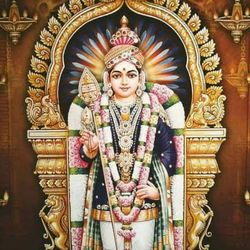

1.Festival Celebration:
In India, numerous holidays such as Diwali are held to bring the family together; similarly, in Korean households, Chuseok (a major festival) and other festivals are held to bring individuals who have been apart for the entire year closer together and spend time with family. Bihu, a festival celebrated in India's northeastern states, is very similar to Chuseok. Even the offerings are similar, and the traditional dances of the northeast match dances performed at Korean festivals (not exactly the same, but similar due to some formations and props). There may be many other commonalities in terms of festivals that may only be discovered via attentive observation and professional research.
2.Status Of male And Female in Households:
The idea that the male is the breadwinner of the household, and the female is supposed to look after the house is still prominent in both countries in some areas, but as time passes, people's attitudes change, and they are more willing to accept that men and women have equal standing. That is why both countries have a number of successful women in their areas who have overcome every impediment posed by a male-dominated society. Even after demonstrating that males can care for the household and women can earn a living, some people in both countries refuse to accept the new cultural reforms.
3.Parent and Child Relations:
Parents in both countries enable their children to live with them in the same house even after graduation; after marriage, the youngsters decide whether to live separately or with their parents. Furthermore, parents' expectations from their children are the same on both sides; both want their children to get high-end government jobs and if they work for a private company, they must be in top positions to earn a good salary; as a result, in both countries, parents can be seen forcing their children to become doctors, engineers, or hold MBA degrees even if the children do not want to do so; and if their children choose a different major, their parents become unsupportive of that.
However, the new generation of parents is not of this old mindset, and this will soon change. Also, because Korea has a K-pop industry, Korean parents tend to get their children into the industry at a young age, and as we all know, debuting is difficult, and not all trainees debut, so those who try to debut at the age of 5 or 10 get depressed, which is not good for a country's youth, and the same goes for Indian parents who are just beginning to want their children to be an actor/actress or a model.

4.Moving on To Similarities in Cuisine:
Quality food is extremely essential in all cultures, while Korean households place a greater emphasis on healthy and nutritional foods. They typically consume veggies and meat with rice. Rice is a staple cuisine in Korea, just as it is in many regions of India. However, in Indian cuisine, the emphasis is also on nutritious and pleasant food products, and people in India typically eat veggies with flatbread, commonly known as roti. In addition, unlike Koreans, most Indians are vegetarians.
There are several dishes in both Korean and Indian cultures that are similar to each other.for example:
Kimchi and Achaar
These two are both side dishes with a wide variety that can be found in any area of both countries. Kimchi and Achaar are cooked in a similar manner; both are seasoned or marinated in spices before fermentation.




